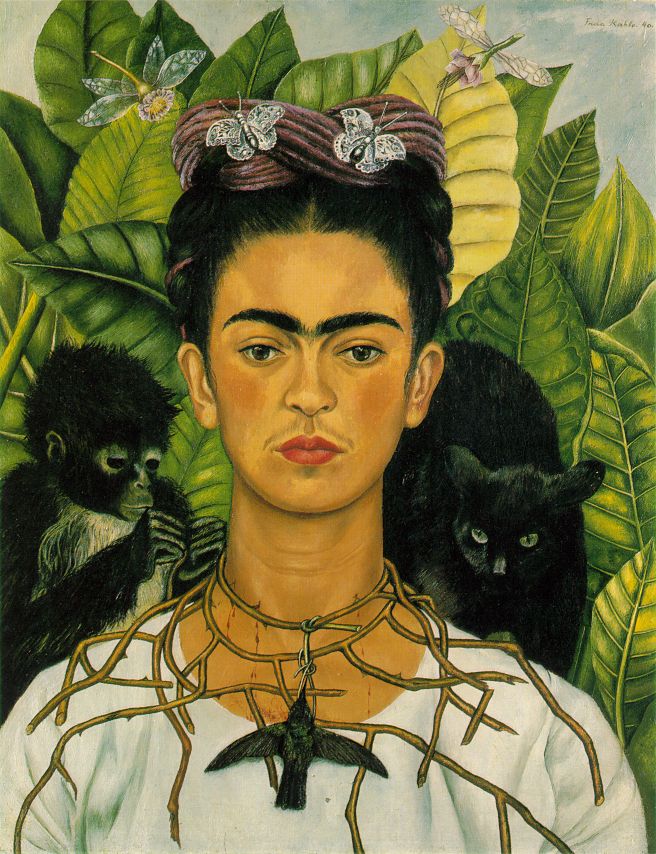Frida Kahlo: one of the loveliest women to have ever existed.
As a woman with severe depression and anxiety and other mental fuck-ery who paints her nightmares, I’ve been inspired by Frida in a way that “normal” people can’t empathize with. Don’t get me wrong, I’m nowhere near as talented, intelligent, or wholly beautiful as Frida is but when I look at her life, I feel hope, rather than pity at the travesty her human experience was.

On Halloween, I acted on a recent whim to dress like her and made a thorn necklace and dressed as Frida from her Self-Portrait with Thorn Necklace, Hummingbird, and Unibrow. It’s not only one of my favorite paintings but one of my favorite paintings ever. When I look at this painting, I see myself. I see my blood where the thorns pierce my neck and I see the beauty around me and the sadness in me. An indescribable sensation of relief washes over me as I realize that someone so famous, loved, and even revered has felt the what I have felt and perhaps that is why art itself is so appealing: there is a spiritual and intellectual connection between the audience and the artist and we feel compelled the same way the artist was when they created their work.
I’m reading a book right now called A First Rate Madness: Uncovering Links Between Leadership and Mental Illness. Reading it is like looking at a work by Frida. The description of historical leaders and innovators who have turned their experiences into something creative, beautiful, and brilliant is inspirational to no end; once convinced that my condition was hopeless and my life was futureless, I now dare to think that perhaps not all is lost. And I feel hope. Which is all we ever need, right?
I don’t want to turn this blog post into a corny mush fest, inviting everyone to turn negative experiences into something positive and then give examples of people who have done this in the past. I’ve heard enough of those condescending, douche-bag lectures for several lifetimes. I just want to thank the likes of Frida Kahlo and Van Gogh for showing me that beauty was possible in places of utter ugliness and despair. I want to thank them for not just instilling emotion in me but for understanding me. I want to thank Frida for being so fucking smart and independent and  awesome and providing me with an actual role model: someone who was completely different and okay with that.


